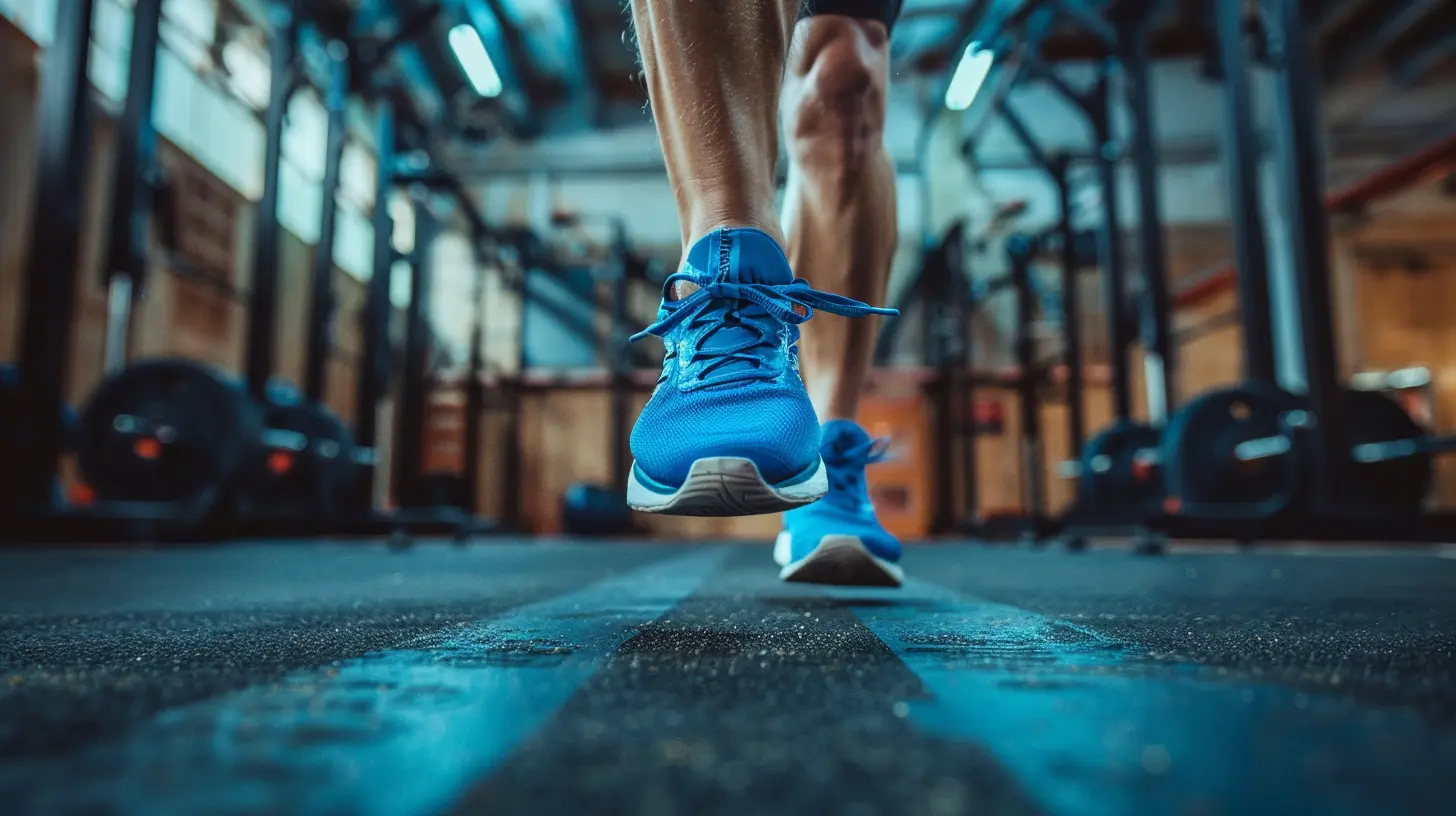17 March 2025
When it comes to enhancing athletic performance, we often hear about strength training, cardio workouts, and skill drills. But what if I told you there's a secret weapon that not only builds explosive power but also takes your agility and coordination to a whole new level? Enter plyometrics.
If you're ready to jump higher, run faster, or just dominate the playing field, this is the training for you. And guess what? You don’t need fancy equipment or hours at the gym to get started. Let’s break it all down step-by-step so you can incorporate plyometrics into your workout routine and start reaping the benefits. 
What Exactly Is Plyometrics?
First, let’s demystify the term. Plyometrics—sometimes called "jump training"—is a type of exercise that focuses on quick, explosive movements. These exercises are all about generating maximum force in a short amount of time. Think of it as your body becoming a powerful spring: load the energy, release it, and bam—explosion!To put it simply, plyometrics is the science of jump, land, repeat. It's not reserved for pro athletes either; anyone looking to level up their performance can benefit from it. The beauty of plyometrics lies in its versatility—whether you're into basketball, soccer, running, or just chasing your kids around the backyard, plyos have something for you.
The Science Behind Plyometrics: Why Does It Work?
Okay, let’s geek out for a second. At the heart of plyometrics lies the stretch-shortening cycle (SSC). In non-science terms, this is when your muscles and tendons store energy during the stretching phase and unleash it during the contraction phase.Imagine pulling back a bowstring before firing an arrow. That tension you feel before letting go? That’s your stretch phase. And when you release the bowstring, the arrow flying with speed and force is your explosive phase. Plyometric training teaches your body how to maximize energy storage and release, making every movement more powerful.
It also taps into your fast-twitch muscle fibers—the ones responsible for quick, explosive actions like sprinting or leaping. The more you train these fibers, the more explosive and agile you become. 
Benefits of Plyometrics for Athletes
So, why should you care about plyometrics? Here are just a few game-changing benefits:1. Improved Power and Explosiveness
Want to slam-dunk a basketball or improve your sprinting speed? Plyometrics builds the kind of explosive power athletes need to go from zero to a hundred in no time.2. Enhanced Agility and Quickness
Plyometric exercises improve your ability to change direction quickly and with control. This is a huge asset in sports like soccer, basketball, and tennis.3. Stronger Muscles and Bones
The high-impact nature of plyometrics strengthens not only your muscles but also your bones. Stronger bones mean fewer injuries, and that’s a win-win.4. Better Coordination and Balance
Many plyometric movements challenge your stability, forcing your muscles and brain to work together. This boosts your overall coordination and balance.5. Burn Calories Faster
Because plyometrics involves high-intensity, full-body movements, it’s a calorie-torching workout in disguise. Plus, it keeps your metabolism cranking long after you’re done.
How to Get Started with Plyometrics
Before you dive in, let’s set the stage. While plyometrics is incredibly effective, it’s also intense. If you’re new to fitness or have joint issues, ease your way in and focus on proper form. Trust me, the last thing you want is to go all out and end up pulling a hammy!Tips to Start:
- Warm-Up is Non-Negotiable: A few dynamic stretches and light cardio (like jogging or jumping jacks) will get your muscles primed for action.- Quality Over Quantity: Focus on doing each rep perfectly, rather than cranking out a ton of sloppy ones.
- Rest is Your Friend: Plyometrics is taxing on your body, so take rest breaks between sets to recover fully.
- Listen to Your Body: If something doesn’t feel right, stop. Safety first, always.
Best Plyometric Exercises to Include in Your Routine
Ready to get jumping? Here are some plyometric movements that cater to beginners and advanced athletes alike.1. Jump Squats
Perfect for building lower body strength and explosive power. Here’s how:- Start in a squat position.
- Explode upward, jumping as high as you can.
- Land softly back into a squat. Repeat.
2. Box Jumps
Great for improving vertical leap and lower-body power.- Find a sturdy box or platform.
- Jump onto the box, landing softly with both feet.
- Step down and repeat.
3. Lateral Bounds (Speed Skater Jumps)
Want to boost your agility? This one’s for you.- Stand on one leg, then leap sideways to land on your opposite leg.
- Continue leaping side to side like a speed skater.
4. Clap Push-Ups
Plyometric training isn’t just for your legs!- Perform a regular push-up, but push off the ground explosively so your hands leave the floor.
- Clap your hands mid-air, then land back in push-up position.
5. Burpees with Tuck Jumps
A humbling full-body workout that packs a punch.- Do a standard burpee, but instead of just jumping at the end, add a tuck jump.
- Bring your knees to your chest during the jump, then land softly.
How Often Should You Do Plyometrics?
Plyometrics is a high-impact workout, so it’s important not to overdo it. Aim for 2-3 sessions per week on non-consecutive days to give your body time to recover.Each session should last around 20-30 minutes. You don’t need hours to see results—remember, quality trumps quantity.
Common Mistakes to Avoid
Don’t let rookie errors hold you back. Keep these in mind:1. Skipping the Warm-Up: Jumping into plyos without warming up is a recipe for injuries.
2. Overtraining: It’s tempting to go hard every day, but your body needs rest to rebuild stronger.
3. Bad Form: Poor alignment during jumps or landings can put unnecessary stress on your joints. Always land softly, like a ninja, not a sumo wrestler.
4. Progressing Too Fast: Master the basics before attempting advanced movements. Walk before you run—literally!
Incorporating Plyometrics Into Your Training
Not sure where plyos fit into your workout routine? Try adding them:- As a Warm-Up: A few light plyometric drills can prep your body for intense workouts.
- During Strength Training: Alternate between strength moves (like squats) and plyometrics (like jump squats) for a killer combo.
- As a Standalone Workout: If you're short on time, a 20-minute plyometric session can double as cardio and strength training.
Safety Tips for Plyometric Training
Let’s keep things safe, shall we?- Choose a soft surface like grass, a gym mat, or carpet for your exercises.
- Wear proper footwear with good cushioning and support.
- Gradually increase the intensity as you get stronger and more confident.
Final Thoughts: Your Springboard to Success
Plyometrics is like rocket fuel for your fitness game. It’s the secret sauce that can turn you into a more powerful, agile, and well-rounded athlete. Whether you’re aiming to conquer the court, dominate the field, or simply feel stronger in everyday life, plyometrics ticks all the boxes.So, what are you waiting for? Lace up those sneakers, find some space, and start jumping! Remember, progress isn’t about perfection—it’s about showing up consistently and giving it your all.







Malia Castillo
Great article! I appreciate the clear explanations and practical tips on incorporating plyometrics into training. It's inspiring to see how these exercises can enhance athletic performance. I'm eager to try some of these techniques in my own routine. Thank you!
April 3, 2025 at 2:48 AM